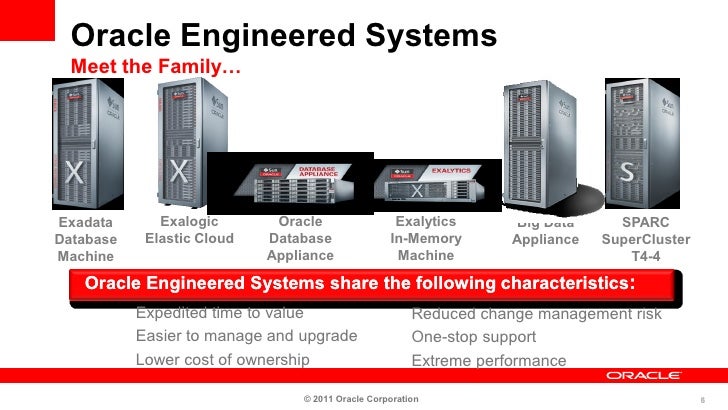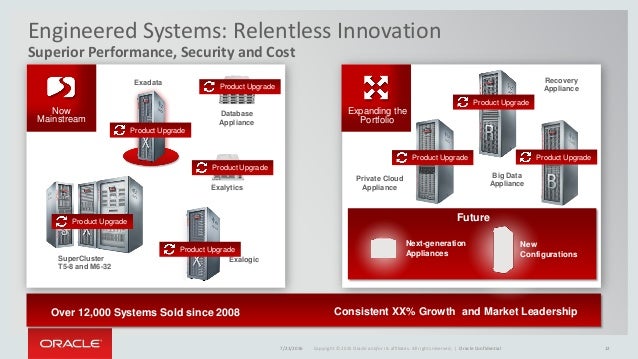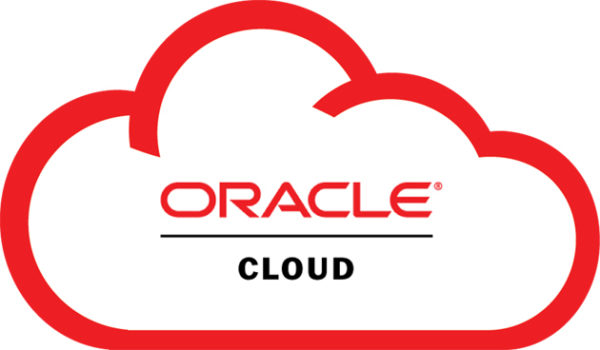What are Oracle Cloud Engineered Systems?
Oracle Cloud Engineered Systems are cutting-edge infrastructure solutions designed to streamline and hasten cloud adoption for businesses. These pre-integrated, pre-engineered, and fully tested systems combine Oracle software, hardware, and firmware into a unified solution, offering unparalleled performance, reliability, and security. By implementing Oracle Cloud Engineered Systems, organizations can simplify their IT landscapes, reduce costs, and accelerate their journey to the cloud.
These systems cater to a wide range of enterprise workloads, including online transaction processing (OLTP), data warehousing, and enterprise resource planning (ERP). They are built on Oracle’s Gen 2 Cloud Infrastructure, ensuring seamless integration with Oracle Cloud services and providing a consistent experience across on-premises and cloud environments. Moreover, Oracle Cloud Engineered Systems offer various deployment options, allowing businesses to choose the best fit for their specific needs and objectives.
Some of the key features and benefits of Oracle Cloud Engineered Systems include:
- Simplified management: Oracle Cloud Engineered Systems come with built-in management tools, automating routine tasks and reducing administrative overhead.
- Superior performance: Engineered systems leverage Oracle’s cutting-edge hardware and software technologies, delivering unmatched performance and scalability for critical workloads.
- Integrated security: Oracle Cloud Engineered Systems offer robust security features, including encryption, access controls, and compliance reporting, ensuring the protection of sensitive data and applications.
- Seamless cloud integration: Oracle Cloud Engineered Systems are designed to work seamlessly with Oracle Cloud services, enabling businesses to build, deploy, and manage applications in a hybrid cloud environment.
- Reduced costs: By consolidating infrastructure, reducing hardware and software licensing costs, and minimizing operational expenses, engineered systems help organizations achieve a lower total cost of ownership (TCO) and higher return on investment (ROI).
Oracle Cloud Engineered Systems: A Comparative Analysis
When considering a move to cloud infrastructure, businesses often evaluate various offerings to find the best fit for their needs. In this context, Oracle Cloud Engineered Systems stand out as innovative solutions that cater to a wide range of enterprise workloads. To fully understand their unique selling points and competitive advantages, let’s compare Oracle Cloud Engineered Systems with other cloud infrastructure options.
First, it’s essential to recognize that Oracle Cloud Engineered Systems are not just another public cloud offering. Instead, they represent a distinct category of infrastructure solutions that combine Oracle software, hardware, and firmware into a unified system. This integration results in superior performance, reliability, and security compared to traditional cloud services.
One of the main advantages of Oracle Cloud Engineered Systems is their ability to support both on-premises and cloud deployments seamlessly. This hybrid cloud approach allows businesses to maintain control over their data and applications while still leveraging the benefits of cloud computing. In contrast, public cloud offerings often require businesses to relinquish some control over their IT resources and adapt their operations to the cloud provider’s environment.
Another differentiator is the level of customization and integration offered by Oracle Cloud Engineered Systems. These systems are designed to work seamlessly with Oracle’s extensive software portfolio, including database, middleware, and applications. As a result, businesses can enjoy a more cohesive and optimized IT landscape, reducing integration costs and complexity.
Lastly, Oracle Cloud Engineered Systems offer a more predictable and consistent pricing model compared to public cloud offerings. With engineered systems, businesses can avoid the risk of unexpected costs associated with usage-based pricing and instead benefit from a transparent and predictable cost structure.
In summary, Oracle Cloud Engineered Systems provide a compelling alternative to traditional cloud infrastructure offerings. By offering superior performance, seamless hybrid cloud support, deep integration with Oracle software, and predictable pricing, engineered systems offer unique advantages that can help businesses simplify their IT landscapes, reduce costs, and accelerate their journey to the cloud.
How to Implement Oracle Cloud Engineered Systems
Implementing Oracle Cloud Engineered Systems can significantly improve your organization’s IT infrastructure, offering enhanced performance, reliability, and security. To ensure a smooth transition, follow this step-by-step guide, which covers best practices, potential challenges, and solutions.
Step 1: Assess Your Current IT Infrastructure
Begin by evaluating your existing IT landscape, identifying workloads suitable for migration to Oracle Cloud Engineered Systems. Consider factors such as performance requirements, scalability needs, and security considerations.
Step 2: Choose the Right Engineered System
Oracle offers various engineered systems, each tailored to specific workloads and use cases. Select the one that best aligns with your business objectives and IT requirements.
Step 3: Plan Your Migration
Develop a comprehensive migration plan, outlining the steps required to move your workloads to the new infrastructure. Ensure that you consider data migration, application compatibility, and any necessary updates or upgrades.
Step 4: Prepare Your Staff
Train your IT team on the new infrastructure, focusing on the unique features and benefits of Oracle Cloud Engineered Systems. This investment in staff development will help ensure a successful transition and minimize potential disruptions.
Step 5: Implement and Validate
Install the engineered system and migrate your workloads, monitoring performance and addressing any issues that arise. Once the migration is complete, validate that all applications and services are functioning as expected.
Step 6: Optimize and Monitor
Fine-tune your new infrastructure to maximize performance and value. Utilize Oracle’s built-in management tools to monitor system health, identify potential bottlenecks, and maintain optimal settings.
When implementing Oracle Cloud Engineered Systems, be aware of potential challenges such as data migration complexities, application compatibility issues, and staff resistance to change. Address these challenges proactively by leveraging Oracle’s support resources, engaging with experienced partners, and fostering a culture of continuous learning and adaptation within your organization.
Real-World Use Cases of Oracle Cloud Engineered Systems
Oracle Cloud Engineered Systems have been successfully implemented across various industries, demonstrating their ability to streamline business operations and enhance IT landscapes. This section showcases real-world use cases that highlight the positive impact of these innovative infrastructure solutions.
Use Case 1: Financial Services
A leading global bank sought to modernize its IT infrastructure to support growing transaction volumes and stringent regulatory requirements. By implementing Oracle Exadata Cloud@Customer, the bank achieved a 40% reduction in infrastructure costs, enhanced security, and improved application performance.
Use Case 2: Healthcare
A large hospital network needed to consolidate its disparate IT systems and improve data accessibility for better patient care. By adopting Oracle Cloud Engineered Systems, the network reduced its data center footprint, accelerated application delivery, and ensured seamless data integration across its facilities.
Use Case 3: Manufacturing
A multinational manufacturing company aimed to optimize its supply chain management and inventory control processes. By implementing Oracle Exadata and Oracle Database Appliance, the company achieved real-time data visibility, improved forecasting accuracy, and reduced operational costs.
Use Case 4: Retail
A major retailer wanted to enhance its e-commerce platform to support increasing online sales and customer traffic. By leveraging Oracle Cloud Engineered Systems, the retailer improved website performance, ensured scalability during peak seasons, and delivered a superior shopping experience for its customers.
Use Case 5: Telecommunications
A prominent telecom provider aimed to accelerate its network functions virtualization (NFV) deployment and reduce time-to-market for new services. By adopting Oracle Cloud Engineered Systems, the provider achieved a 50% reduction in deployment times, enhanced service agility, and improved customer satisfaction.
These real-world use cases demonstrate the versatility and effectiveness of Oracle Cloud Engineered Systems in addressing complex business challenges across various industries. By harnessing the power of these innovative infrastructure solutions, organizations can streamline their IT landscapes, reduce costs, and improve overall performance.
Oracle Cloud Engineered Systems: Key Considerations for Successful Adoption
Transitioning to Oracle Cloud Engineered Systems can significantly enhance your organization’s IT infrastructure. However, careful planning and consideration of essential factors are crucial to ensure a smooth transition. This section discusses key aspects of adopting Oracle Cloud Engineered Systems, including staff training, change management, and long-term planning.
Staff Training
Equipping your IT team with the necessary skills to manage and maintain Oracle Cloud Engineered Systems is essential. Provide comprehensive training programs that cover the unique features and benefits of these infrastructure solutions. Encourage a culture of continuous learning to help your staff stay up-to-date with the latest developments and best practices.
Change Management
Adopting new technology often involves significant changes to existing processes and workflows. Implement a robust change management strategy that includes clear communication, stakeholder engagement, and a phased approach to minimize disruptions and ensure a smooth transition.
Long-Term Planning
When implementing Oracle Cloud Engineered Systems, consider your organization’s long-term IT strategy. Ensure that your infrastructure investments align with your business objectives and support future growth. Develop a roadmap that outlines your migration strategy, timeline, and resource requirements.
Monitoring and Optimization
Regularly monitor the performance of your Oracle Cloud Engineered Systems to identify potential issues and optimize resource allocation. Leverage Oracle’s built-in management tools and analytics to gain insights into system health, usage patterns, and areas for improvement.
Security and Compliance
Protecting your organization’s data and applications is paramount. Implement robust security measures, including access controls, encryption, and regular vulnerability assessments, to ensure the confidentiality, integrity, and availability of your IT resources. Stay abreast of regulatory requirements and industry best practices to maintain compliance.
By considering these key factors, your organization can successfully adopt Oracle Cloud Engineered Systems and unlock their full potential. A well-planned and executed transition will help you streamline your IT landscape, reduce costs, and improve overall performance, ultimately driving business growth and innovation.
The Future of Oracle Cloud Engineered Systems
Oracle Cloud Engineered Systems have been at the forefront of cloud infrastructure innovation, simplifying and accelerating cloud adoption for businesses worldwide. This section explores the latest trends and developments in Oracle Cloud Engineered Systems, discussing their potential impact on the cloud infrastructure market and enterprise IT strategies.
Emerging Trends
The cloud infrastructure market is rapidly evolving, with several emerging trends shaping the future of Oracle Cloud Engineered Systems. These trends include:
- Hybrid and Multi-cloud Strategies: As businesses aim to balance flexibility, control, and cost, hybrid and multi-cloud approaches are becoming increasingly popular. Oracle Cloud Engineered Systems support seamless integration with various cloud platforms, enabling organizations to build a cohesive, optimized IT landscape.
- Artificial Intelligence and Machine Learning: AI and ML technologies are being integrated into cloud infrastructure solutions to automate processes, improve performance, and enhance security. Oracle Cloud Engineered Systems offer built-in AI and ML capabilities, enabling businesses to harness the power of data-driven insights and decision-making.
- Containerization and Microservices: The adoption of containerization technologies, such as Docker and Kubernetes, and microservices architectures is growing, driven by the need for agile, scalable application development and deployment. Oracle Cloud Engineered Systems support containerization and microservices, enabling businesses to modernize their applications and streamline their IT operations.
Impact on Enterprise IT Strategies
Oracle Cloud Engineered Systems are poised to significantly impact enterprise IT strategies, offering numerous benefits, including:
- Simplified Cloud Migration: With pre-integrated, pre-engineered, and fully tested systems, Oracle Cloud Engineered Systems simplify the migration process, reducing complexity, and minimizing disruptions.
- Improved Performance and Scalability: Oracle Cloud Engineered Systems deliver unparalleled performance and scalability, ensuring businesses can meet growing demands and maintain competitive advantage.
- Enhanced Security and Compliance: Oracle Cloud Engineered Systems offer robust security features, including encryption, access controls, and compliance reporting, ensuring the protection of sensitive data and applications.
- Reduced Costs and Improved ROI: By consolidating infrastructure, reducing hardware and software licensing costs, and minimizing operational expenses, Oracle Cloud Engineered Systems help organizations achieve a lower total cost of ownership (TCO) and higher return on investment (ROI).
As the cloud infrastructure market continues to evolve, Oracle Cloud Engineered Systems remain at the cutting edge, offering innovative solutions that cater to the needs of modern businesses. By staying abreast of the latest trends and developments, organizations can leverage the full potential of Oracle Cloud Engineered Systems and drive success in the digital age.
Addressing Common Misconceptions about Oracle Cloud Engineered Systems
Oracle Cloud Engineered Systems have revolutionized the cloud infrastructure landscape, offering businesses innovative solutions to simplify and accelerate cloud adoption. However, several misconceptions surrounding these systems may hinder their adoption. This section debunks common myths and clarifies the true capabilities and limitations of Oracle Cloud Engineered Systems.
Myth 1: Oracle Cloud Engineered Systems are Complex and Difficult to Manage
Fact: Oracle Cloud Engineered Systems are designed with simplicity in mind. They come pre-integrated, pre-engineered, and fully tested, reducing complexity and accelerating deployment. Moreover, Oracle provides robust management tools and resources, enabling businesses to monitor and optimize their systems effectively.
Myth 2: Oracle Cloud Engineered Systems Lack Flexibility
Fact: Oracle Cloud Engineered Systems offer a high degree of flexibility, supporting various deployment models, including on-premises, public cloud, and hybrid cloud environments. They also support a wide range of applications, databases, and middleware, catering to diverse business needs.
Myth 3: Oracle Cloud Engineered Systems are Too Expensive
Fact: While Oracle Cloud Engineered Systems may require a higher upfront investment, they offer long-term cost savings through reduced hardware and software licensing costs, minimized operational expenses, and improved resource utilization. Moreover, they enable businesses to achieve a lower total cost of ownership (TCO) and higher return on investment (ROI).
Myth 4: Oracle Cloud Engineered Systems are Incompatible with Existing Infrastructure
Fact: Oracle Cloud Engineered Systems are built to integrate seamlessly with existing infrastructure, applications, and data. They support various platforms, databases, and tools, enabling businesses to leverage their existing investments and streamline their IT landscapes.
Myth 5: Oracle Cloud Engineered Systems are Only Suitable for Large Enterprises
Fact: Oracle Cloud Engineered Systems cater to businesses of all sizes, from small and medium-sized enterprises (SMEs) to large corporations. They offer scalable, flexible, and customizable solutions that can be tailored to meet the unique needs of any organization.
By addressing these common misconceptions, businesses can better understand the true capabilities and limitations of Oracle Cloud Engineered Systems. Armed with this knowledge, organizations can make informed decisions about adopting these innovative infrastructure solutions and unlock their full potential.
Maximizing Your Investment in Oracle Cloud Engineered Systems
Oracle Cloud Engineered Systems represent a significant investment for businesses seeking to simplify and accelerate their cloud adoption journey. To ensure a strong return on investment (ROI), organizations must employ practical tips and strategies for optimizing the performance and value of these innovative infrastructure solutions. This section offers guidance on maximizing your investment in Oracle Cloud Engineered Systems.
Tip 1: Leverage Built-In Management Tools
Oracle Cloud Engineered Systems come with robust management tools and resources, enabling businesses to monitor and optimize their systems effectively. Utilize these tools to automate routine tasks, identify potential issues, and ensure seamless integration with existing infrastructure and applications.
Tip 2: Implement Best Practices for Resource Allocation
Effective resource allocation is crucial for realizing the full potential of Oracle Cloud Engineered Systems. Implement best practices such as workload consolidation, load balancing, and capacity planning to optimize resource utilization and minimize waste.
Tip 3: Regularly Update and Patch Your Systems
Regularly updating and patching your Oracle Cloud Engineered Systems ensures that you benefit from the latest features, security enhancements, and performance optimizations. Stay abreast of updates and schedule routine maintenance to keep your systems up-to-date and secure.
Tip 4: Engage in Proactive Monitoring and Performance Tuning
Proactive monitoring and performance tuning are essential for maintaining optimal system performance and addressing potential issues before they impact your business operations. Utilize Oracle’s built-in analytics and monitoring tools to gain insights into system health, usage patterns, and areas for improvement.
Tip 5: Establish a Center of Excellence (CoE)
A Center of Excellence (CoE) is a dedicated team responsible for driving the adoption, optimization, and continuous improvement of Oracle Cloud Engineered Systems within your organization. Establishing a CoE enables businesses to leverage in-house expertise, streamline processes, and ensure a consistent approach to managing and maintaining their Oracle Cloud Engineered Systems.
By following these practical tips and strategies, organizations can maximize their investment in Oracle Cloud Engineered Systems, ensuring a strong return on investment (ROI), improved performance, and enhanced value. Embrace these best practices to unlock the full potential of your Oracle Cloud Engineered Systems and drive success in the digital age.







